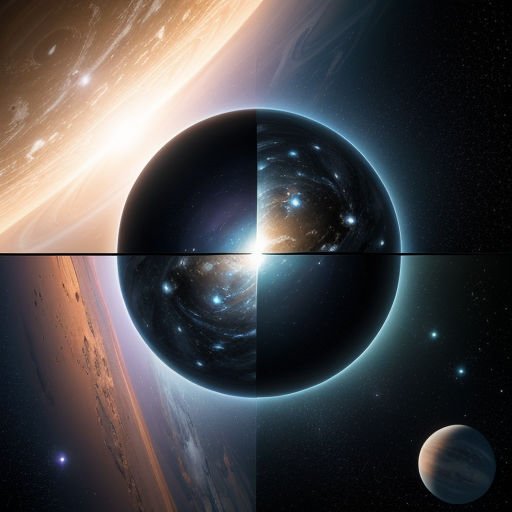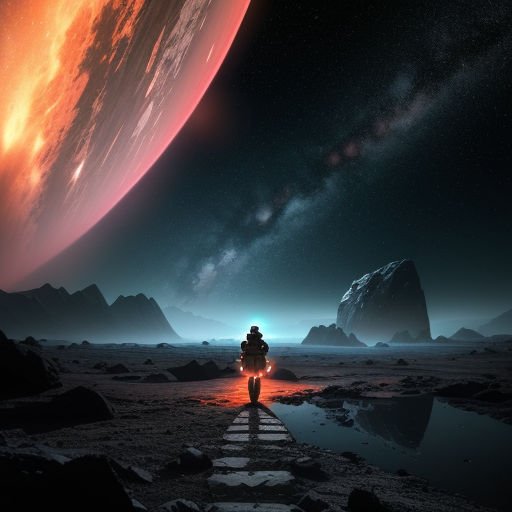When Aliens Refuse to Shake Hands: The Untold Drama of Space Diplomacy
Space Diplomacy in The Day the Earth Stood Still: A Sci-Fi Reflection
Few science fiction films have encapsulated the concept of space diplomacy as profoundly as The Day the Earth Stood Still. Released originally in 1951 and revisited with a modern twist in 2008, this classic and its remake serve as cultural mirrors reflecting humanity’s hopes, fears, and potential when faced with extraterrestrial engagement. The notion of arriving aliens demanding a reckoning for Earth’s aggression forces viewers to consider how diplomacy in space might be our most crucial tool for survival. This article journeys through the thematic layers of The Day the Earth Stood Still, revealing lesser-known facts and the film’s insightful take on interstellar diplomacy, a topic more relevant than ever amidst current advances in space exploration.
Setting the Stage: The Premise of Space Diplomacy in The Day the Earth Stood Still
At its core, The Day the Earth Stood Still dramatizes the moment Earth encounters a higher intelligence through Klaatu, an alien emissary, and his robot companion Gort. Their arrival is not merely an invasion but a diplomatic mission with a stern agenda—to warn humanity about the dangers of its violent ways and the ripple effects beyond Earth.
The 1951 Classic: Post-War Fears and the Dawn of the Space Age
The original movie mirrored Cold War anxieties, where the threat of nuclear destruction loomed large. Klaatu’s message was clear: Earth’s militaristic behavior put the cosmic community at risk. This reflected early space diplomacy ideals—negotiating peace to avoid mutual destruction on a universal scale.
– The robot Gort’s design was groundbreaking for its time, meant to symbolize an unstoppable force, representing the ultimate enforcement of interstellar law.
– Unbeknownst to many, the alien’s name “Klaatu” was a nod to the classic sci-fi radio serial “Buck Rogers,” conveying continuity between speculative storytelling and real-world diplomatic hopes.
The 2008 Reimagining: Globalization Meets Space Diplomacy
The remake updated the story to explore environmental destruction and technological overreach as threats requiring cosmic accountability. Klaatu’s mission shifted toward protecting all life in the galaxy, positioning space diplomacy as an ecological imperative.
– The film incorporated advanced visual effects to showcase the alien technology used in peaceful diplomacy as well as enforcement.
– It attempted to modernize the dialogue around extraterrestrial intervention with references to global environmental crises, highlighting space diplomacy’s evolving context.
Why Space Diplomacy Is Central in The Day the Earth Stood Still
The films emphasize dialogue, negotiation, and ultimately accountability at a cosmic level. Klaatu’s arrival is not just a threat but an opportunity for mankind to demonstrate its willingness to cooperate beyond Earth’s borders and ego.
Lessons in Communication Among Species
Klaatu’s initial choice to speak with scientists and leaders signals the importance of credible interlocutors in space diplomacy. This aligns with real-world principles where ambassadors and negotiators must bridge cultures to achieve understanding.
– Klaatu’s insistence on justice over destruction underscores diplomacy’s core aim to balance security and peace.
– The peaceful components—such as Klaatu’s refusal to allow violence unless provoked—illustrate diplomacy’s function as both a shield and a pathway for progress.
Space Diplomacy as a Mirror to Human Politics
The films hold a mirror to Earth’s own diplomatic struggles, illustrating distrust, fear, and the challenge of uniting under common values. Yet, they also highlight hope: the chance for transformation through external intervention.
– The portrayal of government officials’ confrontation with Klaatu reveals tensions between openness and paranoia, a relevant theme even today.
– The robot Gort embodies enforcement of cosmic law, raising questions about the role of power and peacekeeping in diplomatic efforts.
Science Fiction’s Role in Shaping Real-World Space Diplomacy Mindsets
Science fiction movies like The Day the Earth Stood Still are not just entertainment—they fuel imagination necessary for shaping real policies in space exploration and diplomacy.
Influence on Space Treaties and Ethics
Movies capturing space diplomacy concepts help familiarize the public and policymakers with ethical scenarios involving contact with extraterrestrial life.
– The Outer Space Treaty of 1967, which governs space activities, echoes the film’s themes by emphasizing peaceful, cooperative use of space.
– Fictional representations of diplomatic encounters encourage proactive thinking about non-violent protocols beyond Earth.
Inspiration for Future Space Ambassadors
The film’s depiction of Klaatu as a rational, empathetic alien has inspired many to envision future diplomats who prioritize dialogue over conflict in space exploration missions.
– Educational programs in astrobiology and planetary protection often reference classic films to contextualize the importance of international collaboration.
– Space agencies increasingly consider diplomatic perspectives when planning missions that could potentially detect or interact with life beyond Earth.
Deeper Insights: Behind the Scenes and Trivia
Fans of The Day the Earth Stood Still might be surprised to learn more about its production, cultural impact, and scientific accuracy regarding the theme of space diplomacy.
Production Challenges and Symbolism
The original film was shot on a modest budget but used innovative special effects, including the iconic Gort robot, crafted to evoke a message of deterrence and order.
– Michael Rennie, who played Klaatu, took inspiration from a perceived “benevolent authoritarian” archetype to portray diplomatic authority.
– The phrase “Klaatu barada nikto” became a cult mantra, symbolizing communication beyond language barriers—a fundamental aspect of space diplomacy.
Scientific Precautions and Portrayals
While Hollywood liberties were taken, the film’s narrative carefully avoids portraying aliens as invaders but rather as cosmic law enforcers, promoting dialogue in line with emerging protocols for first contact.
– The idea of an interstellar community policing destructive species parallels ongoing considerations of planetary protection policies.
– The 2008 film consulted scientists and ethicists to ground space diplomacy discussions in contemporary scientific understanding.
The Future of Space Diplomacy: Lessons from The Day the Earth Stood Still
As humanity embarks on more ambitious space endeavors, including manned missions to Mars and the search for extraterrestrial intelligence (SETI), the essence of space diplomacy in The Day the Earth Stood Still grows increasingly vital.
Preparing for Extraterrestrial Engagement
The film’s core message—responsibility, communication, and peace—serves as a guidepost for preparing protocols in the event of alien contact.
– International bodies like the United Nations have started discussions on frameworks inspired by science fiction’s diplomacy models.
– The challenge remains to unite diverse cultures and governments in crafting coherent policies for shared space governance.
Expanding Space Diplomacy Beyond Aliens
Today, “space diplomacy” also applies to cooperation among nations and private entities racing for space resources, satellites, and defense.
– As space becomes increasingly crowded, diplomatic solutions are imperative to avoid conflict over orbital space and planetary resources.
– Lessons from the film remind us that diplomacy requires foresight, respect, and sometimes intervention to uphold universal law.
Space Diplomacy and Popular Culture: A Two-Way Street
The Day the Earth Stood Still not only projects space diplomacy ideals but also reflects societal attitudes back to its audience, creating a dynamic interplay between fiction and public perception.
Cultural Impact and References
The phrase “The day the Earth stood still” has entered popular lexicon, symbolizing a moment of pause to contemplate critical issues, including peace, environment, and interplanetary relations.
– The film has been referenced in diverse media, from music to television, underscoring its lasting influence on space diplomacy discourse.
– It reminds audiences that the cosmos demands respect and ethical engagement, resonating with contemporary space exploration efforts.
Encouraging Global Dialogue
By dramatizing successful communication across species, the film encourages viewers to imagine global cooperation, a necessary mindset as we move beyond Earth-centric worldviews.
– Space diplomacy in fiction fosters empathy by challenging anthropocentric perspectives, paving the way for inclusive policies.
– The film inspires dialogue on the responsibilities of advanced civilizations, be they terrestrial or extraterrestrial.
Reflecting on The Day the Earth Stood Still: Timeless Space Diplomacy Lessons
The narrative’s enduring appeal stems from its thought-provoking treatment of a universal concept—negotiation and peace extending beyond Earth’s borders. Space diplomacy as depicted in The Day the Earth Stood Still is more than a plot device; it is a blueprint for humanity’s future in the cosmos.
– The films encourage audiences to think critically about ethical challenges posed by technological advancement and interstellar contact.
– They illustrate that diplomacy requires courage, humility, and vision—qualities essential to safeguarding not just Earth but any civilization’s place in a larger cosmic community.
Imagine a future where humanity truly embraces space diplomacy, engaging with new civilizations not as conquerors but as partners. The Day the Earth Stood Still offers a hopeful, cautionary tale urging us to prepare wisely.
Why not embrace this vision today? Stay informed about space diplomacy developments, support international space collaboration, and explore the vibrant genre of science fiction that continues to shape our cosmic aspirations.
For further reading on real-world space diplomacy efforts and the evolving policies surrounding extraterrestrial engagement, visit the United Nations Office for Outer Space Affairs at https://www.unoosa.org.














Post Comment